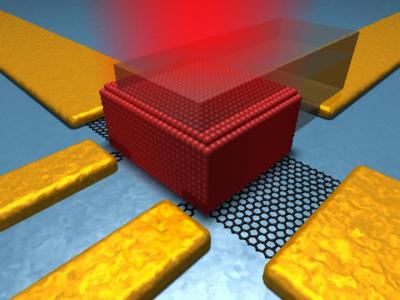ICFO researchers have developed a hybrid photodetector capable of reaching improved performance features in terms of speed, quantum efficiency and linear dynamic range, operating not only in the visible but also in the near infrared (NIR: 700-1400nm) and SWIR range (1400-3000nm). In addition, this technology is based upon materials that can be monolithically integrated with Si CMOS electronics as well as flexible electronic platforms.

To achieve this, the team of researchers developed a hybrid device by integrating an active colloidal quantum dot photodiode with a graphene phototransistor. By including an "active" quantum dot photodiode, they were able to increase charge collection in a highly absorbing thick QD film, which in turn increased the quantum efficiency as well as the photoresponse. The active quantum dot layer enabled a more effective charge collection by exploiting carrier drift towards the graphene layer instead of relying only on diffusion. The researchers then combined this scheme with a graphene transistor to register ultra-high-gains and record gain-bandwidth products, thanks to Graphene's 2D character and remarkably high carrier mobility.
The results of this study have shown that this hybrid architecture clearly demonstrates the potential of graphene and active quantum dot materials, opening new pathways for their integration in other optoelectronic materials in search for much higher performance and a broader spectrum of functionalities.

